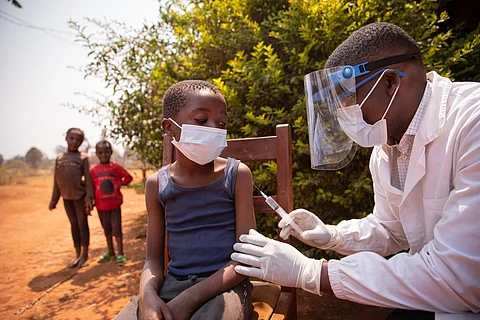

The World Health Organization (WHO) has announced that Guinea has successfully eliminated the gambiense form of human African trypanosomiasis (HAT), also known as sleeping sickness, as a public health problem.
The only form of human African trypanosomiasis found in Guinea has become the first neglected tropical disease to be eliminated in the country.
The announcement, made by the WHO in an official press statement on January 29, was made on the eve of the global observance of Neglected Tropical Diseases Day which is marked today, on January 30.
Tedros Adhanom Ghebreyesus, WHO director general, highlighted the accomplishment as a sign of global progress in the fight against NTDs and a beacon of hope for other nations battling HAT.
HAT is a parasitic disease transmitted through the bite of infected tsetse flies. It initially presents with symptoms such as fever, headaches, and joint pain, but can progress to neurological issues like confusion, disrupted sleep, and behavioural changes. If left untreated, the disease can be fatal.
In the 1990s, HAT resurfaced in Guinea’s coastal areas, particularly near Conakry, due to increased human activity in mangroves.
In response, Guinea’s Ministry of Health and Public Hygiene established the National Programme for the Control of HAT in 2002, with support from WHO, the Institut de Recherche pour le Développement (IRD), and later other partners like the Drugs for Neglected Diseases initiative and the Institut Pasteur de Guinée. Early efforts focused on mass screenings to diagnose and treat cases, which proved crucial in controlling the disease.
A key strategy in Guinea’s battle against HAT was the implementation of vector control measures in 2012, designed to reduce human contact with tsetse flies. The use of insecticide-impregnated mini-screens was introduced in 2012 and expanded nationwide by 2016.
Despite challenges from the Ebola outbreak (2013-2015) and the COVID-19 pandemic (2020), which disrupted medical activities, Guinea adapted by continuing HAT screenings, including door-to-door efforts to maintain control.
Throughout the campaign, local communities played a vital role, ensuring that interventions were culturally acceptable and supported. Advances in diagnostic techniques, improved treatment methods, and consistent funding from WHO and other partners further strengthened the programme’s effectiveness. These efforts led to the reduction of HAT cases to below the WHO threshold of one case per 10,000 inhabitants in all endemic areas, signaling the successful elimination of the disease as a public health problem.
Guinea’s accomplishment is part of a broader trend, with seven other countries — Togo, Benin, Côte d'Ivoire, Uganda, Equatorial Guinea, Ghana, and Chad — also validated by WHO for eliminating the gambiense form of HAT. Additionally, the rhodesiense form of HAT has been eliminated in Rwanda.
This achievement highlights the significant progress being made in controlling and eliminating neglected tropical diseases, demonstrating the potential of sustained investment, partnerships, and community involvement in addressing public health challenges.